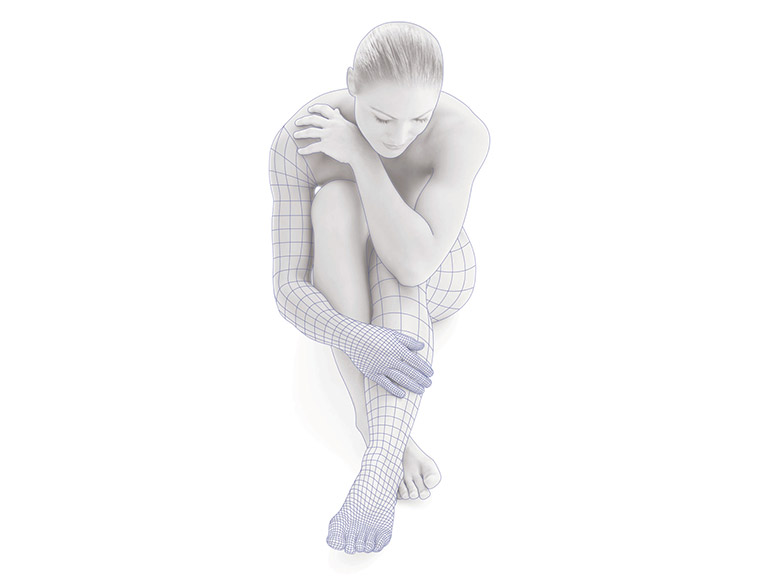

Lymphedema is a term used to describe the accumulation of protein-rich fluid (called lymph) in a particular part of the body, resulting in swelling of the affected area(s). The lymphatic system is made up of a network of lymphatic vessels, lymph nodes and other lymph tissue. It forms part of both the circulatory and immune systems, and is essential for both the transport of lymph and the body’s immune function. Lymphedema occurs either because the lymphatic system isn’t working properly, or there is simply too much fluid for a normal lymphatic system to process.
Traditionally, there are two types of lymphedema, primary and secondary. Primary lymphedema occurs as a result of congenital abnormalities of the lymphatic system. Symptoms may be present from birth or appear later in life. Secondary lymphedema occurs due to damage to a previously intact lymphatic system. A common cause of secondary lymphedema is cancer or its treatment.
Lymphedema is not easy to diagnose because sometimes first symptoms occur after many years. Nevertheless, it is important to get the accurate diagnose and treatment as soon as possible.

Diagnosis of lymphedema requires assessment by a doctor or healthcare professional who has undergone specialist training in lymphedema assessment and its management. Early diagnosis is essential to facilitate timely treatment. Receiving lymphedema risk-reduction education is also important for those at risk of the development of secondary lymphedema. See also, Diagnosis.
Following an accurate diagnosis, lymphedema may be classified into different stages. While there are a number of different staging systems utilised internationally, the International Society of Lymphology (ISL) Lymphedema staging system is commonly used, as outlined in the table below adapted from the Lymphedema Framework, 2006.
A subclinical state where swelling is not evident despite impaired lymph transport.
This stage may exist for months or years before edema becomes evident.
This represents early onset of the condition where there is accumulation of tissue
fluid that subsides with limb elevation. The edema may be pitting at this stage.
Limb elevation alone rarely reduces swelling and pitting is manifest.
There may or may not be pitting as tissue fibrosis is more evident.
The tissue is hard (fibrotic) and pitting is absent. Skin changes such as thickening,
hyperpigmentation, increased skin folds, fat deposits and warty overgrowths
develop.
While lymphedema is a chronic condition with no cure at this time, there are many treatment options available. Treatment plans should be holistic, multidisciplinary and coordinated. The goals of lymphedema treatment should be to optimise lymph flow, reduce (and maintain) swelling and improve skin condition. Achieving these goals will also reduce the risk of cellulitis (also called, erysipelas).
While mild lymphedema may be managed with exercise, skin care and compression stockings, more advanced lymphedema may require a course of complete decongestive therapy (CDT). CDT is considered the ‘gold standard’ of lymphedema treatment, and consists of an initial reductive phase, followed by a maintenance phase.
Additional treatments may include intermittent pneumatic compression therapy (IPC), laser or lymph taping. A number of surgical interventions are also available for the management of lymphedema, all of which require long-term post-surgical compression therapy.
Lymphoedema Framework. Best Practice for the Management of Lymphoedema. International consensus. London: MEP Ltd, 2006.